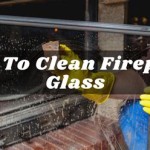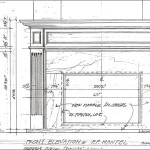Gas Fireplace Blower Fan Installation: A Comprehensive Guide
A gas fireplace provides supplemental heat and aesthetic appeal to a home. However, its efficiency can be enhanced through the addition of a blower fan. This component circulates heated air from the fireplace into the room, improving heat distribution and overall comfort. Installing a blower fan is a project that can be undertaken by homeowners with some technical aptitude, but it's crucial to understand the necessary steps and safety precautions.
This article provides a detailed guide to gas fireplace blower fan installation. It covers essential pre-installation considerations, a step-by-step installation procedure, and troubleshooting common issues. It’s important to consult the fireplace and blower fan manufacturer's instructions for specific guidance pertinent to the particular models being used. Disregarding these guidelines can result in improper operation, safety hazards, or voiding warranties.
Assessing Compatibility and Gathering Necessary Materials
Before beginning the installation process, it's imperative to confirm the compatibility of the blower fan with the existing gas fireplace. Not all fireplaces are designed to accommodate a blower fan, and using an incompatible model can damage the fireplace or the fan itself. The fireplace manufacturer's specifications will indicate whether a blower can be installed and the appropriate size and type of blower fan to use.
Once compatibility is established, the next step involves gathering the necessary tools and materials. A standard installation typically requires the following:
*Blower fan kit: This should include the blower fan, wiring harness, mounting hardware, and installation instructions.
*Screwdriver set: Both Phillips head and flathead screwdrivers are commonly needed.
*Wire strippers: For preparing electrical connections.
*Wire connectors (wire nuts or crimp connectors): To safely join electrical wires.
*Pliers: Useful for gripping and manipulating wires.
*Voltage tester: To verify the power is off before working on electrical components.
*Gloves: To protect hands during the installation process.
*Safety glasses: To protect eyes from debris.
*Flashlight or work light: To provide adequate illumination.
*Measuring tape: For verifying dimensions and clearances.
*Drill (optional): May be needed to create mounting holes if they are not pre-existing.
Ensuring all necessary tools and materials are readily available before starting the installation will streamline the process and minimize delays.
Step-by-Step Installation Procedure
The installation process can vary slightly depending on the fireplace and blower fan model, but the general steps are similar. The following procedure provides a comprehensive overview:
1. Safety First: Disconnect Power and Gas Supply Before commencing any work, the power to the fireplace must be disconnected at the circuit breaker. This prevents the risk of electrical shock during the installation. Additionally, the gas supply to the fireplace should be shut off at the gas valve. This is a crucial safety precaution to prevent gas leaks.
2. Access the Blower Fan Compartment Most gas fireplaces have a designated compartment for the blower fan, usually located at the bottom or rear of the unit. Refer to the fireplace manufacturer's instructions to locate and access this compartment. This typically involves removing a panel or grate, secured by screws or clips.
3. Prepare the Fireplace for Blower Fan Installation Depending on the fireplace model, some preparation may be required before installing the blower fan. This might entail removing existing components, such as insulation or brackets, that could obstruct the blower fan. Clean the blower fan compartment thoroughly to remove dust, debris, and any other obstructions.
4. Install the Blower Fan Carefully position the blower fan within the designated compartment. Ensure it is oriented correctly, with the air intake facing the back of the fireplace and the air outlet facing the front. Secure the blower fan using the provided mounting hardware, such as screws or clamps. Ensure the fan is firmly attached and will not vibrate or move during operation.
5. Connect the Electrical Wiring Connect the blower fan's electrical wiring to the fireplace's wiring harness. This typically involves matching corresponding wires based on color coding (e.g., black to black, white to white, green to green or bare copper). Use wire strippers to expose the ends of the wires and connect them using wire connectors (wire nuts or crimp connectors). Ensure the connections are secure and properly insulated to prevent short circuits.
6. Secure Wiring and Prevent Contact with Heat Carefully tuck the wiring harness away from any heat sources within the fireplace. Use zip ties or other fasteners to secure the wiring and prevent it from contacting hot surfaces, such as the burner assembly or flue. This minimizes the risk of wire damage and potential electrical hazards.
7. Reassemble the Fireplace Once the blower fan is installed and the wiring is connected, reassemble the fireplace by replacing any panels or grates that were removed earlier. Ensure all components are securely fastened and properly aligned.
8. Restore Power and Gas Supply After reassembling the fireplace, restore the power supply by turning on the circuit breaker. Then, carefully restore the gas supply by slowly opening the gas valve. Check for any gas leaks around the valve and connections using a gas leak detector or a solution of soapy water. If any leaks are detected, immediately shut off the gas supply and contact a qualified gas technician.
9. Test the Blower Fan Turn on the fireplace and allow it to heat up. Then, activate the blower fan to ensure it is operating correctly. Listen for any unusual noises or vibrations. Check the airflow coming from the fireplace to verify that the blower fan is effectively circulating heated air into the room. Adjust the blower fan speed, if adjustable, to achieve the desired airflow and comfort levels.
Troubleshooting Common Issues
Even with careful installation, some issues may arise after installing a gas fireplace blower fan. The following are some common problems and potential solutions:
1. Blower Fan Not Working If the blower fan fails to operate after installation, the first step is to verify that the power supply is active and that the circuit breaker has not tripped. Check all electrical connections to ensure they are secure and properly connected. If the fan still doesn't work, consult the blower fan manufacturer's troubleshooting guide or contact a qualified electrician.
2. Excessive Noise or Vibration Excessive noise or vibration can indicate that the blower fan is not properly secured or that there is an obstruction in the fan blades. Check the mounting hardware to ensure the fan is firmly attached to the fireplace. Inspect the fan blades for any debris or obstructions and remove them carefully. If the noise or vibration persists, the fan may be defective and require replacement.
3. Insufficient Airflow Insufficient airflow can be caused by a clogged air intake or outlet, an undersized blower fan, or improper installation. Check the air intake and outlet for any obstructions, such as dust, debris, or insulation. Make sure the blower fan is the appropriate size for the fireplace and that it is installed correctly, with the air intake facing the back of the fireplace and the air outlet facing the front.
4. Overheating If the fireplace or blower fan overheats, it can indicate a blockage in the airflow or a faulty thermostat. Check the air intake and outlet for any obstructions and ensure that the fireplace is properly ventilated. If the overheating continues, consult a qualified technician to inspect the fireplace and blower fan for potential problems.
5. Electrical Issues Any electrical issues, such as flickering lights or tripped circuit breakers, should be addressed immediately by a qualified electrician. Do not attempt to troubleshoot electrical problems without proper training and experience. Electrical issues can be dangerous and can lead to fire hazards.
While this guide provides a comprehensive overview of gas fireplace blower fan installation, it is essential to consult the fireplace and blower fan manufacturer's instructions for specific guidance and safety precautions. Proper installation and maintenance will ensure optimal performance, safety, and longevity of the gas fireplace and blower fan.

Fbk 250 Fireplace Blower Kit Installation

Installing A Fireplace Blower Gfk4 Gfk4a In Heatilator Natural Gas

Noisy Gas Fireplace Blower Here S How To Replace It Diy

Gfk4 Gfk4a Fireplace Blower Kit Installation

How Is A Fireplace Blower Kit Wired Fireplaceblowers Com

How To Install A Blower Into Majestic Or Other Gas Fireplace Installation Tips Tricks

Gfk4 Gfk4a Fireplace Blower Kit Installation

How To Choose And Install A Gas Fireplace Blower Kit

Fireplace Blowers Explained How Fans Work Regency

How To Choose And Install A Gas Fireplace Blower Kit








